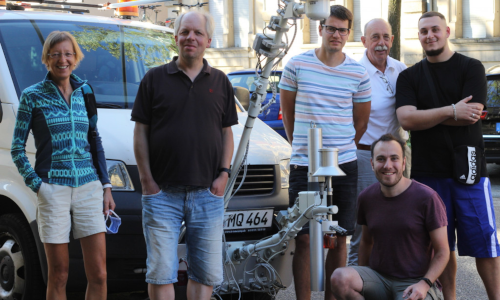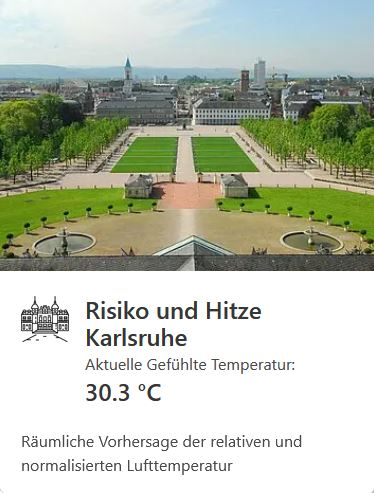Urban areas are more exposed to increased thermal stress compared to rural areas due to the heat island effect. According to the guidelines of the Sendai Framework for Disaster Risk Reduction 2015-2030 of the United Nations, public administration should be strengthened at the local level to minimize future risks, including exposure to heat. In the project GrüneLunge1.0, we investigated the heat island effect and temperature differences within the cities of Karlsruhe and Rheinstetten. Building on the results of the first project phase, GrüneLunge 2.0 evaluated heat stress and the associated risks for people living in urban areas. We also developed a tool to facilitate appropriate decision-making to address these challenges.
The aim of the subproject was to implement a local specific heat warning system for the city of Karlsruhe including the influence of vegetation and urban structures. The thermal comfort of people is accessible through thermal indices such as felt temperature, which combines the meteorological parameters air temperature, vapor pressure, wind speed, wind direction and global radiation. The thermal indices, which also consider people's thermo-physiology, provide a way to quantify the impact of people's thermal environments and will serve as a basis for setting thresholds in heat-related mortality. Urban morphology, as well as green infrastructure, alters meteorological parameters and thus human thermal comfort at the microscale. This is particularly important in the context of climate change and will be incorporated into the small-scale heat warning system. In addition, the risk factors of urban infrastructure, such as hospitals, retirement homes, nursing homes, schools and kindergartens, were given special consideration.
The specific, small-scale heat warning system took into account short- and long-term heat reduction measures and issue recommendations for action. The proposed method also offers the potential for implementation in other German/European cities with comparable northern latitudes.
.png)

